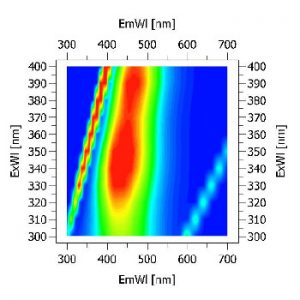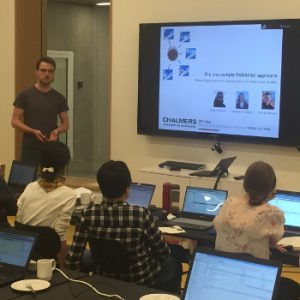In this post, Patrick Baudy reports on his visit at a workshop for the characterization of fluorescent dissolved organic matter (DOM) at the Technical University of Denmark in Copenhagen.
DOM is involved in a series of ecosystem functions and constitutes the most abundant organic matter in the aquatic environment. Despite the ecological importance of DOM for aquatic systems, little is known about how its quality as well as quantity may be affected by human activities in and around stream ecosystems.
A promising method to investigate, for instance, adverse effects of environmental contaminants on both DOM quality and quantity is to spectrally analyze water samples by exciting them over a range of wavelengths, while measuring a range of emissions for every excitation wavelength. This yields a fluorescence landscape – an excitation-emission matrix. Not stopping there, the fun part begins, on which the workshop mainly focused: finding the true number of DOM components hiding inside these landscapes using parallel factor analysis (PARAFAC).
The workshop was held in early June in Copenhagen at the Technical University of Denmark in fantastic weather (for Danish standards). During the three-day workshop, we went through quite a number of different program points,such as data collection and treatment, data preparation, many PARAFAC tutorials, a poster session, and a couple of presentations held by the instructors. It was a great small group of participants, and luckily there was a continuous supply with plenty of coffee and lots of pastries, fruit, sandwiches, and other good stuff. The overall workshop atmosphere was very relaxed.
Finally, many thanks to the instructors: Kathleen Murphy, Colin Stedmon, and Urban Wünsch for organizing a really nice workshop, which was absolutely worth the trip to Copenhagen. If you would like to use PARAFAC for your own research they are the right guys to turn to!



